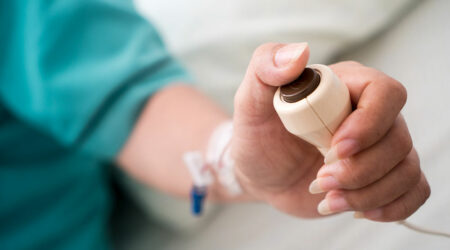
Low platelets – Signs, causes, and how to increase their levels
Our blood comprises four major components: plasma, red blood cells, white blood cells, and platelets. Platelets, or thrombocytes, are colorless cells that play a vital role in blood clotting. Healthy adults generally have a platelet count between 150,000 to 450,000 per microliter of blood. When this figure drops below 100,000, it leads to thrombocytopenia or low platelet count. Below, you can learn more about the symptoms, causes, and treatments for a low platelet count.
What are the symptoms of a low platelet count?
The most commonly occurring symptoms include the following:
- Easy or excessive bruising (purpura)
- Prolonged bleeding from cuts
- Bleeding from the gums and/or the nose
- Blood in the urine, stools, or vomit
- Rectal bleeding
- Unusually heavy menstrual flow
- Fatigue
- Enlarged spleen
Besides the above, patients may experience superficial bleeding in the skin that looks like pinpoint-sized reddish-brown or purple spots, also known as petechiae. This low platelets symptom generally occurs on the lower legs.
What causes a low platelet count?
Several factors can contribute to the problem. Generally, it occurs in one of the following situations:
- The bone marrow does not make enough platelets.
- The bone marrow makes enough platelets, but the supply still runs low (occurs when the body is fighting a disease or infection).
- The spleen traps the platelets so they cannot circulate in the bloodstream.
Some more specific causes of low platelets include:
Immune thrombocytopenia (ITP)
This is among the most common causes. It occurs when the immune system mistakenly starts attacking platelets instead of infections.
ITP may also result from specific health conditions (known as secondary ITP). Generally, treating the underlying condition helps improve the symptoms. Some ailments that may trigger secondary ITP include:
- Viral infections like chicken pox, parvovirus, hepatitis C, Epstein-Barr, and HIV
- Systemic lupus erythematosus (SLE)
- Chronic lymphocytic leukemia (CLL)
- Sepsis
- Helicobacter pylori (H. pylori), a bacteria that infects the digestive tract, damaging the tissue in the stomach and first part of the small intestine.
Cancer and cancer treatments
Blood cancers like leukemia and lymphoma can damage the bone marrow and its ability to make platelets. Treatments like chemotherapy and radiation may also destroy stem cells, reducing one’s platelet count.
Thrombotic thrombocytopenic purpura (TPP)
This blood disorder triggers the formation of tiny blood clots in the body. Platelets are used up in this clotting process, reducing its supply.
Exposure to toxic chemicals
Exposure to chemicals like arsenic, benzene, and pesticides can also affect the platelet levels in the body.
Pregnancy
Pregnant women may develop mild thrombocytopenia around their due date.
What are the treatment options for those with a low platelet count?
The treatment for low platelets depends on the underlying cause and severity. Those with mild thrombocytopenia may not require expert intervention. For more severe cases, the treatment options may include:
Increasing platelet production
Doctors may prescribe certain therapies to boost the platelet count and suppress the immune system.
Blood or platelet transfusions
If a person’s platelets drop too low, doctors may recommend temporarily replacing lost blood or platelets with transfusions. This method helps improve the levels for up to three days.
Surgery
If the spleen is capturing a large amount of platelets, doctors may recommend surgery to remove the spleen (splenectomy). However, this may increase the risk of infections in the future.
Plasma exchange
Plasma exchange may be recommended for those living with TPP to increase low platelets during an emergency.
Besides using formal treatments, patients must take better care of themselves to avoid complications. Some lifestyle changes that may help include:
- Avoiding activities that increase the risk of injury, such as contact sports (football, basketball, and soccer).
- Eating healthy foods, including plenty of fruits and vegetables.
- Traveling safely by wearing a helmet or seatbelt.
- Practicing good dental hygiene to avoid dental problems that may cause bleeding.




